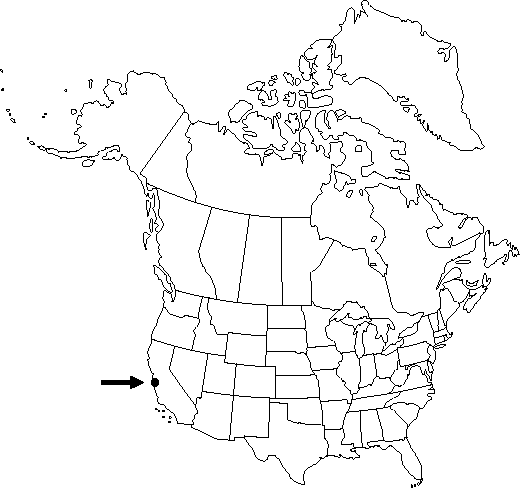Difference between revisions of "Cupressus macrocarpa"
J. Hort. Soc. London 2: 187. 1847.
FNA>Volume Importer |
imported>Volume Importer |
||
| (7 intermediate revisions by 2 users not shown) | |||
| Line 8: | Line 8: | ||
}} | }} | ||
|common_names=Monterey cypress;ciprés Monterrey | |common_names=Monterey cypress;ciprés Monterrey | ||
| + | |special_status={{Treatment/ID/Special_status | ||
| + | |code=E | ||
| + | |label=Endemic | ||
| + | }}{{Treatment/ID/Special_status | ||
| + | |code=C | ||
| + | |label=Conservation concern | ||
| + | }} | ||
|basionyms= | |basionyms= | ||
|synonyms= | |synonyms= | ||
| Line 17: | Line 24: | ||
}}<!-- | }}<!-- | ||
| − | --><span class="statement" id="st- | + | --><span class="statement" id="st-undefined" data-properties=""><b>Trees </b>to 25 m; crown generally broadly spreading, especially on exposed headlands, fairly sparse, often composed of few major limbs from near ground, more upright in sheltered locations. <b>Bark</b> rough, fibrous. <b>Branchlets</b> decussate, 1.5–2 mm diam. <b>Leaves</b> without gland or sometimes with inconspicuous, shallow, pitlike, abaxial gland that does not produce drop of resin, not glaucous. <b>Pollen</b> cones 4–6 × 2.5–3 mm; pollen sacs 6–10. <b>Seed</b> cones oblong, 2.5–4 cm, grayish brown, not glaucous; scales 4–6 pairs, smooth, umbo nearly flat at maturity. <b>Seeds</b> mostly 5–6 mm, dark brown, not glaucous. <b>2n</b> = 22.</span><!-- |
-->{{Treatment/Body | -->{{Treatment/Body | ||
| Line 23: | Line 30: | ||
|elevation=5–35 m | |elevation=5–35 m | ||
|distribution=Calif. | |distribution=Calif. | ||
| − | |discussion=<p>The geographically most restricted taxon recognized here, Cupressus macrocarpa is confined today to two picturesque groves near Monterey, but it is also known from fossils to have been in other regions. It is much planted and commonly naturalized near the coast from central California north to Washington and in warm temperate and subtropical regions worldwide.</p><!-- | + | |discussion=<p>The geographically most restricted taxon recognized here, <i>Cupressus macrocarpa</i> is confined today to two picturesque groves near Monterey, but it is also known from fossils to have been in other regions. It is much planted and commonly naturalized near the coast from central California north to Washington and in warm temperate and subtropical regions worldwide.</p><!-- |
--><p>Of conservation concern.</p> | --><p>Of conservation concern.</p> | ||
|tables= | |tables= | ||
| Line 33: | Line 40: | ||
-->{{#Taxon: | -->{{#Taxon: | ||
name=Cupressus macrocarpa | name=Cupressus macrocarpa | ||
| − | |||
|authority=Hartweg | |authority=Hartweg | ||
|rank=species | |rank=species | ||
| Line 46: | Line 52: | ||
|publication title=J. Hort. Soc. London | |publication title=J. Hort. Soc. London | ||
|publication year=1847 | |publication year=1847 | ||
| − | |special status= | + | |special status=Endemic;Conservation concern |
| − | |source xml=https:// | + | |source xml=https://bitbucket.org/aafc-mbb/fna-data-curation/src/2e0870ddd59836b60bcf96646a41e87ea5a5943a/coarse_grained_fna_xml/V2/V2_242.xml |
|genus=Cupressus | |genus=Cupressus | ||
|species=Cupressus macrocarpa | |species=Cupressus macrocarpa | ||
| − | |||
| − | |||
| − | |||
| − | |||
| − | |||
| − | |||
| − | |||
| − | |||
| − | |||
| − | |||
| − | |||
| − | |||
| − | |||
| − | |||
| − | |||
| − | |||
| − | |||
| − | |||
| − | |||
| − | |||
| − | |||
| − | |||
| − | |||
| − | |||
| − | |||
| − | |||
| − | |||
| − | |||
| − | |||
}}<!-- | }}<!-- | ||
-->[[Category:Treatment]][[Category:Cupressus]] | -->[[Category:Treatment]][[Category:Cupressus]] | ||
Latest revision as of 20:22, 5 November 2020
Trees to 25 m; crown generally broadly spreading, especially on exposed headlands, fairly sparse, often composed of few major limbs from near ground, more upright in sheltered locations. Bark rough, fibrous. Branchlets decussate, 1.5–2 mm diam. Leaves without gland or sometimes with inconspicuous, shallow, pitlike, abaxial gland that does not produce drop of resin, not glaucous. Pollen cones 4–6 × 2.5–3 mm; pollen sacs 6–10. Seed cones oblong, 2.5–4 cm, grayish brown, not glaucous; scales 4–6 pairs, smooth, umbo nearly flat at maturity. Seeds mostly 5–6 mm, dark brown, not glaucous. 2n = 22.
Habitat: Coastal bluffs
Elevation: 5–35 m
Discussion
The geographically most restricted taxon recognized here, Cupressus macrocarpa is confined today to two picturesque groves near Monterey, but it is also known from fossils to have been in other regions. It is much planted and commonly naturalized near the coast from central California north to Washington and in warm temperate and subtropical regions worldwide.
Of conservation concern.
Selected References
None.
